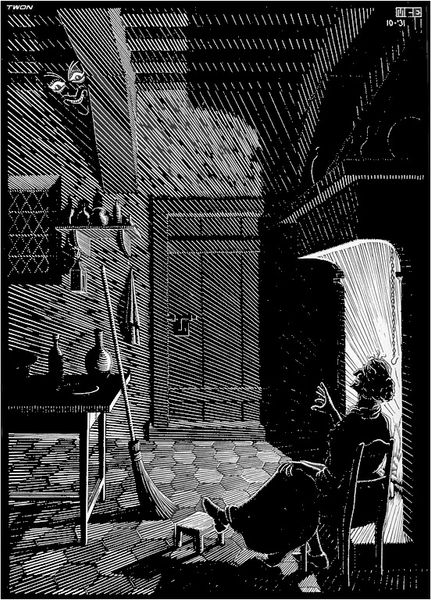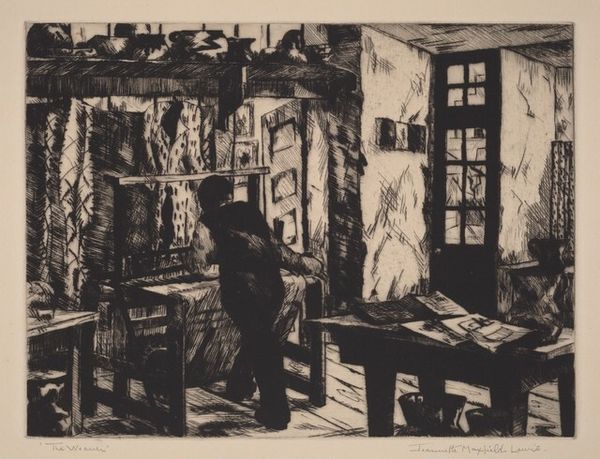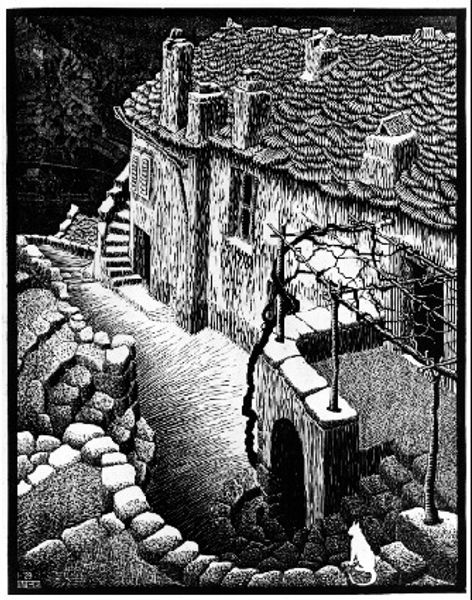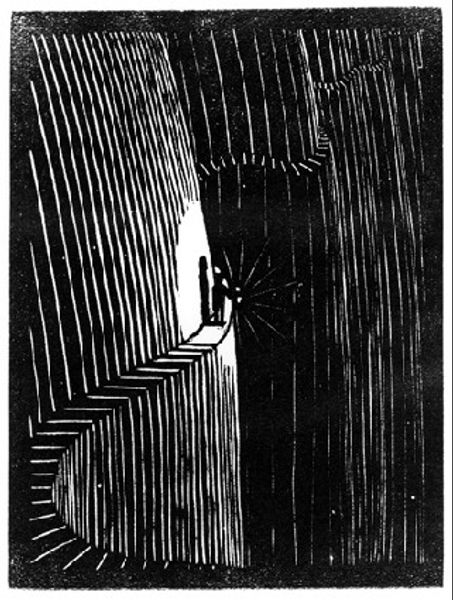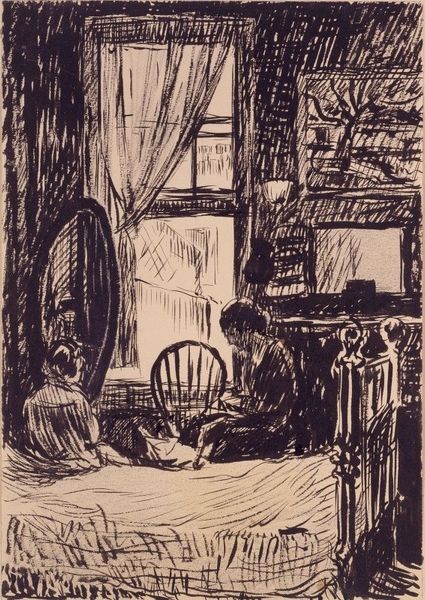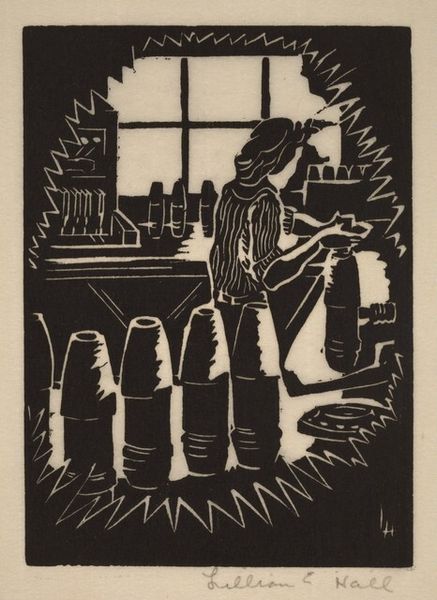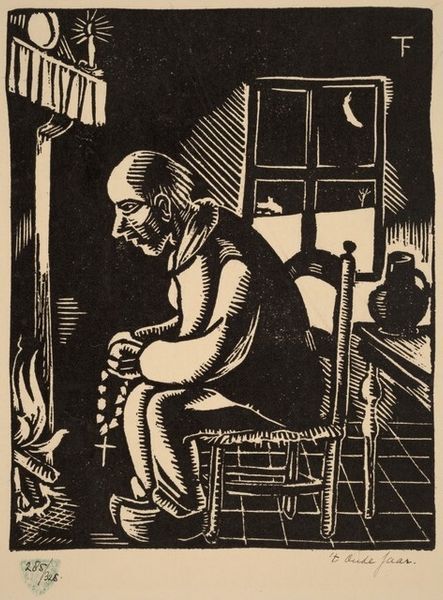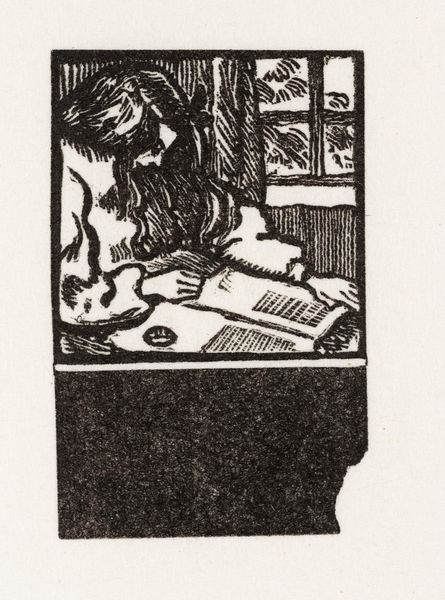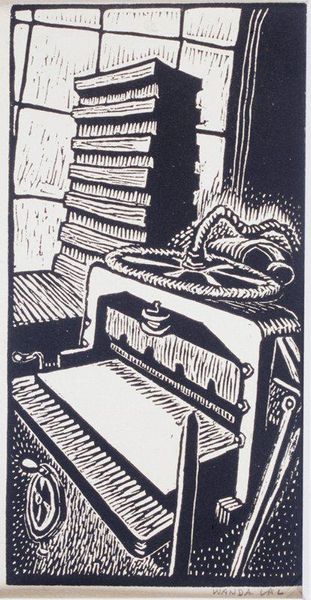
drawing, paper, ink
#
drawing
#
narrative-art
#
figuration
#
paper
#
ink
#
expressionism
#
surrealism
Copyright: Public domain US
Editor: Mstislav Dobuzhinsky's "White Nights," created in 1922 using ink on paper, evokes such a profound feeling of isolation. The high contrast and sharp lines emphasize the somber mood, and it feels like there’s a narrative hidden in the shadows. What do you see in this piece? Curator: The socio-political climate in 1922 Russia cannot be ignored when viewing "White Nights." We see the residue of a period defined by war and upheaval. The intimate interior space is unsettling. What do you make of the stark contrast between the domesticity and obvious distress? Editor: It makes me think about the psychological impact of those events on individuals, as they try to make sense of this tumultuous backdrop. The man looks like he's struggling to leave, maybe emigrate, but there is despair. Curator: Exactly. The figure seemingly poised to leave suggests the larger context of forced displacement, while the figure on the chair seems defeated, like someone forced to accept the reality in front of them. Dobuzhinsky isn't just depicting an interior; he is commenting on the breakdown of a societal structure. Note also how the harsh lighting illuminates certain areas and obscures others. Does that create a particular kind of effect for you? Editor: The strong contrast feels intentional, to bring certain anxieties and experiences to the fore. How do you see the artist using expressionism in a historical light? Curator: Dobuzhinsky uses the conventions of Expressionism – distortion, symbolism and raw emotion – but he bends them to convey a specific sense of Russian reality in the early 1920s, one defined by socio-political turbulence. Understanding its historical position enriches the art, in my opinion. Editor: It certainly shifts my perspective! Thanks for untangling this layered, rich artwork with me. Curator: And thank you for these insights. Examining art through both its emotional resonance and historical positioning unlocks powerful new viewpoints.
Comments
No comments
Be the first to comment and join the conversation on the ultimate creative platform.




